
|
We need more information This article is a stub. You can help Gas Mask and Respirator Wiki by expanding it and adding more information to it. |
Overview[]
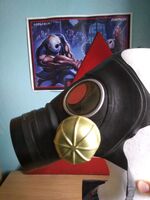
Sideview
With the Cold War heating up in the 1950s, the British authorities decided to design, develop and procure of a new pattern of civilian mask. Overall C7 design is mostly inspired by the British General Civilian Respirator. The C7 is currently a poorly researched mask, with reputable information being scarce. A US Document (Nonmilitary defense for the United States : strategic, operational, legal and constitutional aspects), mentions that by 1961, Britain had stockpiled around 55 million C7 respirators.
Mask[]
The crux of the C7 General Civilian Respirator design stems from the wartime General Civilian Respirator, but the C7 has several noted improvements.
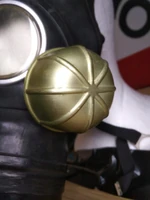
C7 exhale assembly, with spines
Unlike the wartime civilian mask, where exhaled air was simply forced out the side, the C7 has an actual exhale valve. The unusual gold 'mushroom' shaped exhale valve cover is perhaps the most noticeable feature. The exhale valve cover has small spines on it, probably to increase structural integrity.
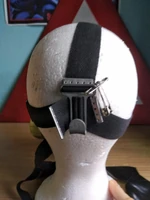
C7 harness assembly
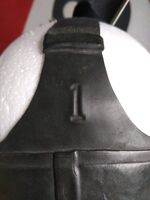
Size stamp on C7
The head-harness is noted for its simplicity. 3 black fabric straps are attached to the facepiece via rubber luting. At the back of the head-harness is a buckle which all 3 straps are threaded through, a piece of metal is added to each strap to ensure the straps do not fall out of the buckle.
The size stamp is located on the top strap. There is also a small stamp on the side of the mask which contains the manufacturers initials and a date code.
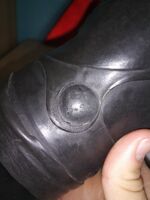
Made by LBR, June 1953
A hook and loop system is located at the bottom of the facepiece, which when joined, forms a another strap which hooks onto the back of the main buckle assembly.
Internally, the general construction of the C7 is basic; featuring no Tissot system or any other dedicated anti-fog solutions. It is unknown if C7 was intended to be issued with anti-fog kits. There is a canvas plane on the inside which helps reinforce the section of rubber holding the eyepiece assembly. The canvas on the example pictured is stamped 'LOTUS 9/53'. One of the C7 prototypes is seen as having bare canvas/fabric on the outside portion surrounding the eyepieces.
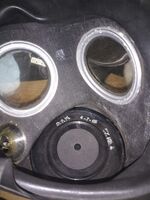
Inside of C7
Filter[]
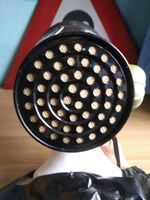
Closeup of filter
A typical C7 will be found with a 'GC Mk 4' filter. The GC stands for General Civilian. These filters appear to be a continuation of the filters from wartime masks. This filter is attached to the mask via rubber rings.
Several stamps can be found on the C7 filter - 'GC Mk 4' (denoting the filter type), a date (for example 6-7-53, this is most likely the date of filters manufacture) and finally D.F.M. (currently unknown what this is, possibly manufacturers name).
Some C7 masks were fitted with a 40mm thread and took gold filters. These 40mm variants are particularly rare.
Other Speculation[]
There is a record [1] held within the UK National Archives which is dated 1951 and concerns the issue of Civilian respirators in Malta, the respirator in question is possibly the C7.
Misinformation/Unconfirmed Story[]
This mask is often called the 'Avon C7' which is incorrect. This term implies only Avon rubber manufactured this mask, however, it is known that LBR & Co. (Leyland Birmingham Rubber) and BTR (British Tyre and Rubber) also made this respirator.
A story (often told by eBay sellers and youtubers) is often told about the C7. The story states that the C7 was considered 'too expensive' and thus all C7 respirators that had been already issued were rounded back up and subsequently dumped in the North Sea. This has been proven false by the aforemention US Non-military defence dissertation.
Further Reading & References[]
https://archive.org/details/ScientificIntelligenceOfficersOperationalNotes/page/n7/mode/2up
